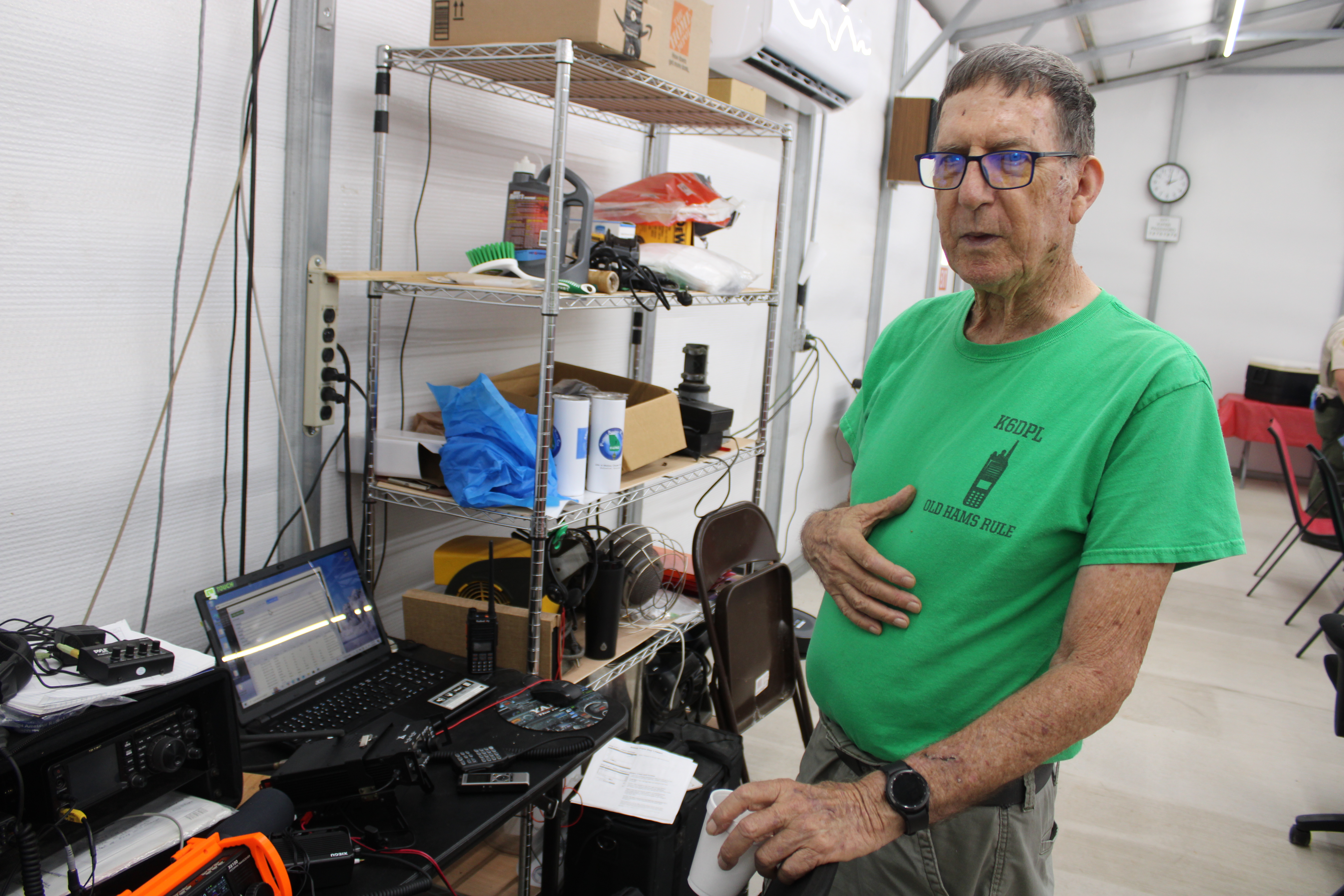OUR SPACE: Martian clouds at night
Published 3:42 pm Tuesday, February 25, 2025

- NASA’s Curiosity Mars rover captured these clouds in a 16-minute recording on Jan. 17. While the Martian clouds may look like the kind seen in Earth’s skies, they include frozen carbon dioxide, or dry ice. Red-and-green-tinted clouds drift through the Martian sky in the new set of images from the rover using its Mastcam, its main set of ‘eyes,’ showing the latest observations of what are called noctilucent (Latin for ‘night shining’), or twilight clouds, tinted with color by scattering light from the setting Sun. (NASA/JPL-Caltech/MSSS/SSI)
Most of us don’t think much about clouds.
These days clouds mean mostly gloomy days and grey, cold and clammy weather. While we already had early signs of spring, Old Man Winter returned with a vengeance last week. Clouds influence our moods more than we give them credit for, and observing their shapes and movements along with subtle environmental clues was pretty much the only way to forecast local weather back in the olden days. Anyone who does backcountry camping will do well being able to read the clouds and getting a rough prediction in, especially if you find yourself in a dead zone and your cellphone doesn’t have access to the Weather Channel or one of the internet satellite mega-constellations overhead.
Clouds are a fairly common phenomenon in our solar system, from the thick layers of Venus as a result of a runaway greenhouse effect to the raging storms on the outer gas giants, whipping around the atmospheres of those large planets at hundreds of miles per hour.
Trending
If a planet has an atmosphere, however thin, it has the potential of developing clouds if conditions are right. Even a planet as bone-dry and cold as Mars sees clouds on occasion. Granted, Mars also has massive dust storms — continent-sized fields of ultrafine dust like baby powder, covering most of the planet at times, but those are not the clouds we want to look at today.
We’re talking about clouds made of water vapor or other gases, steam made visible through a difference in ambient temperature. Depending on where your main light source (in our case, the sun) is, clouds can be pure white, dark, dirty grey, or a variety of colors ranging from purple to gold. Clouds made of high-altitude ice crystals can even display the colors of the rainbow, shaped like mysterious columns or flag-shaped fields.
But there’s one category of clouds that most of us have not observed a lot — the noctilucent clouds, or, literally translated “night-shining clouds”. Clouds at night are nothing particularly special; they get a little more interesting right after sunset where they can go from pure white to inky black in a vividly colored sky. Noctilucent clouds are far more rare, however, and a number of conditions must be met for them to form and be visible.
Usually observed in the summer months well after sunset, noctilucent clouds are made of ice crystals in the mesosphere, the upper atmosphere of the Earth. The air is extremely thin and very very cold there. Microscopic ice crystals form in the coldest areas, usually above the poles, around tiny little dust particles, most of which are probably of meteoric origin — leftovers from shooting stars, if you will. While the rest of the ground beneath has transitioned into night those clouds are up high enough that they are still illuminated by the sun — hence the term “night-shining” clouds. The further north you go, the greater is your chance of seeing them.
Noctilucent clouds have also been observed on Mars — it started with the Pathfinder mission in 1997, and after many years of observations scientists have learned when and where to look for them. Last month the Curiosity Mars rover made a 16 minute video of those iridescent shimmering rainbow-colored clouds above Mars.
Mars is so dry that cloud formation is an entire field of study within Martian meteorology. Luckily the rovers often catch a glimpse of the sky when surveying their barren surroundings, and while the occasional dust devil brings some excitement, everyone is always delighted when clouds show up in the view. Mars meteorologists often combine these cloud views with observations from satellites in orbit, which allows for better calculations of wind speed and direction. As the old song goes, “two heads are better than one”!
Trending
Oddly enough, noctilucent clouds on Mars seem to form only in the southern hemisphere, during early Fall. Why they haven’t been seen elsewhere is still quite the mystery, and only continued vigilance and perhaps some weather stations specializing in twilight observations may tell us why one day.
If you’d like to learn more about those elusive jewels of the early night, check out https://spaceweather.com/ — the side bar has daily updates on where to spot noctilucent clouds on Earth. We’ll have to wait a few more months before they’ll return to our hemisphere, but in the meantime there are tons of beautiful photos available online.
—Beate Czogalla is the Professor of Theater Design in the Department of Theatre and Dance at Georgia College & State University. She has had a lifelong interest in space exploration and has been a Solar System Ambassador for the Jet Propulsion Laboratory/ NASA for many years. She can be reached at our_space2@yahoo.com





